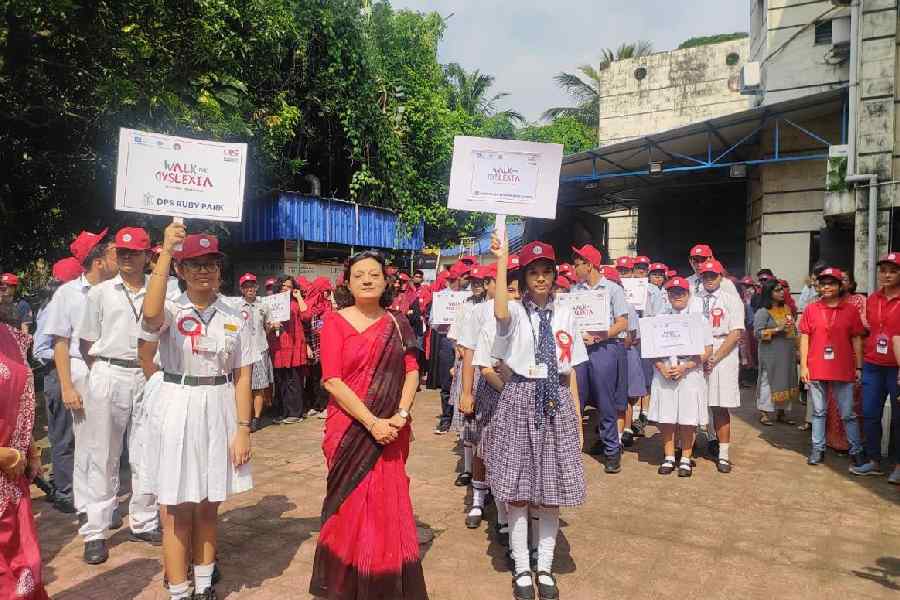A packed audience of students and teachers at Rotary Sadan listened and learned how to be peer buddies to children with learning and writing difficulties on Monday.
Often termed dyslexia, the neuro-biological condition can afflict one in five children in a classroom.
If the condition is identified and remedial measures adopted, the child can overcome his difficulties and shine academically as brilliantly as any other.
October is Dyslexia Awareness Month.
On Monday, Anjali Dyslexia Association, in association with The Telegraph, held a Walk for Dyslexia from Rotary Sadan. Students and teachers from universities, colleges, and schools attended the walk, which was followed by a panel discussion to raise awareness.
Arundhati Sarkar, founder and director of Anjali Dyslexia Association, said: “There are neurology-based scientific ways of teaching to help dyslexic students. We here are trying to motivate peer groups to help dyslexic learners.”
Sheela Menon Mukherjee, special educator at The Heritage School, spoke of inclusivity and the power of support that works wonders for such special children.
“We need to be empathetic and not label them. These children might have difficulty spelling words. But if they are asked to tick the correct spelling from multiple
choices, about 65 per cent of them get them right,” she said.
Dwelling on how such children can be identified, Debasri Banerjee, professor of educational psychology at Calcutta University, said: “When silly mistakes are made repeatedly, we teachers should become alert.”
Sarkar added: “If a child is unable to rhyme or count backward, or has problems remembering things, then watch out.”
There is a free application too that helps identify children at risk.
The condition might be genetic, she said in reply to a question.
The responsibility of identifying and helping such children lies solely with the teacher.
“Reading and writing are two tools of communication that are not available to dyslexic children and we must remember that such children if not handled with care can slip into depression. The problem mostly lies with the attitude of teachers and the peer group. Children often feel humiliated in the classroom,” said Mukherjee.
Sarkar pointed out that autism, ADHD and dyslexia can co-occur in children. ADHD and dyslexia are the most common co-occurrences. These conditions need to be tackled holistically. There are no medicinal cures.










